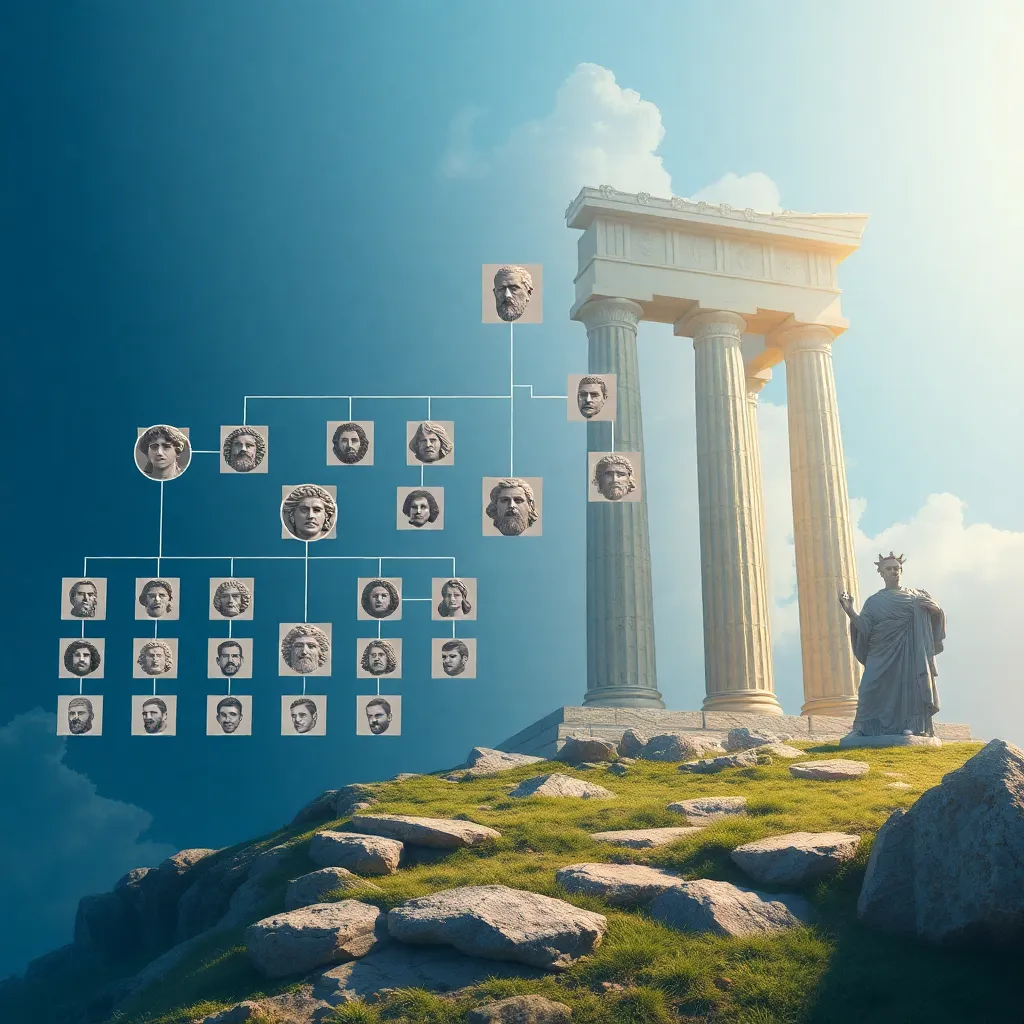Analyzing the Family Tree of the Titans
I. Introduction
The Titans are central figures in Greek mythology, representing a primordial race of deities that predate the Olympian gods. They embody significant natural and cosmic elements, influencing the world in various ways. Understanding their family dynamics provides insight into ancient Greek beliefs about creation, power, and the relationships between gods. This article aims to explore the origins, roles, and fates of the Titans, along with their impact on subsequent generations of deities.
II. Origins of the Titans
The Titans trace their lineage back to the primordial deities: Chaos, Gaia (the Earth), and Uranus (the Sky). Chaos represents the void and the beginning of all things, while Gaia and Uranus personify foundational elements of the world.
The birth of the Titans marked a critical moment in creation mythology. The key figures among the Titans include:
- Gaia – The Earth, who gave birth to Uranus.
- Uranus – The Sky, who fathered the Titans with Gaia.
The Titans played a vital role in shaping the world, as they were involved in the establishment of natural order and the governance of various aspects of life.
III. The Twelve Original Titans
The original Titans are generally considered to be twelve in number. Each Titan represents different aspects of the cosmos:
- Cronus – The leader of the Titans who overthrew his father, Uranus.
- Rhea – Sister and wife of Cronus, known as the mother of the Olympian gods.
- Oceanus – The Titan of the ocean, representing the vast bodies of water.
- Tethys – Sister and wife of Oceanus, goddess of the nourishing flow of fresh water.
- Hyperion – The Titan of light, father of the sun, moon, and dawn.
- Theia – The goddess of sight and the shining light of the blue sky.
- Coeus – The Titan of intellect and the axis of heaven.
- Phoebe – The goddess of prophecy and the moon, associated with the Oracle of Delphi.
- Crius – The Titan associated with the constellations and the measure of time.
- Iapetus – The Titan of mortality, often linked to craftsmanship and the human race.
- Mnemosyne – The goddess of memory, mother of the Muses.
- Themis – The goddess of divine law and order, representing justice and fairness.
Each Titan’s role contributes to the rich tapestry of Greek mythology, influencing various narratives and themes throughout ancient texts.
IV. Notable Offspring of the Titans
The Titans are also known for their significant offspring, many of whom became key figures in Greek mythology:
- Hestia – Goddess of the hearth and domestic life.
- Demeter – Goddess of agriculture and fertility.
- Hera – Queen of the gods and goddess of marriage and family.
- Hades – God of the underworld.
- Poseidon – God of the sea and earthquakes.
- Zeus – The king of the gods and god of the sky.
The lineage of the Titans significantly influenced the characteristics and domains of the Olympian gods, establishing a continuum of power and mythology from one generation to the next.
V. The Titanomachy: Clash of Generations
The Titanomachy was a monumental conflict between the Titans and the Olympian gods, led by Zeus. This epic war lasted for ten years and was marked by fierce battles, shifting alliances, and dramatic betrayals.
Key players included:
- Zeus – Leading the charge against the Titans.
- Cronus – Father of Zeus and leader of the Titans, opposed to his son’s rise.
The motivations behind this conflict were rooted in power struggles and the desire for dominance. Ultimately, the Olympians emerged victorious, leading to significant consequences for both the Titans and the newly established order of gods.
VI. The Fates of the Titans
Following their defeat in the Titanomachy, many Titans faced dire consequences. Most were imprisoned in Tartarus, a deep abyss used as a dungeon of torment and suffering.
However, not all Titans were completely removed from mythological narratives. Some were given roles in later stories, and a few even found redemption or continued influence in the world.
The legacy of the Titans continues to resonate in modern culture, influencing literature, art, and popular media.
VII. Symbolism and Themes in Titan Family Dynamics
The family dynamics of the Titans are rich with symbolism and themes that reflect broader human experiences:
- Power and Betrayal – The struggle for supremacy often led to betrayal among family members.
- Familial Loyalty – Despite conflicts, many Titans exhibited strong ties to their kin.
- The Cycle of Generations – The transition from Titans to Olympians represents the cyclical nature of power and authority in mythology.
These themes provide insight into ancient Greek values and the complexities of human relationships.
VIII. Conclusion
The family tree of the Titans is a captivating aspect of Greek mythology that reveals significant insights into ancient beliefs about creation, power, and family. By examining their origins, relationships, and legacies, we can better understand the complexities of these primordial beings and their lasting impact on mythology and storytelling.
As we reflect on the Titans, we are encouraged to explore other mythological family trees that shape our understanding of ancient cultures and their narratives.




